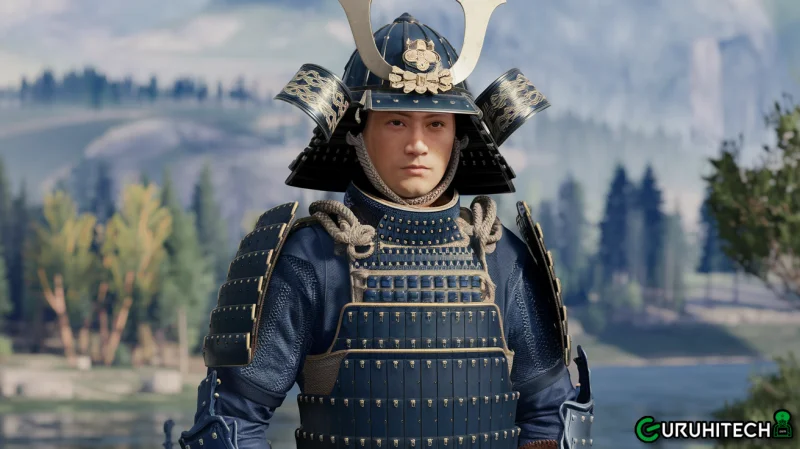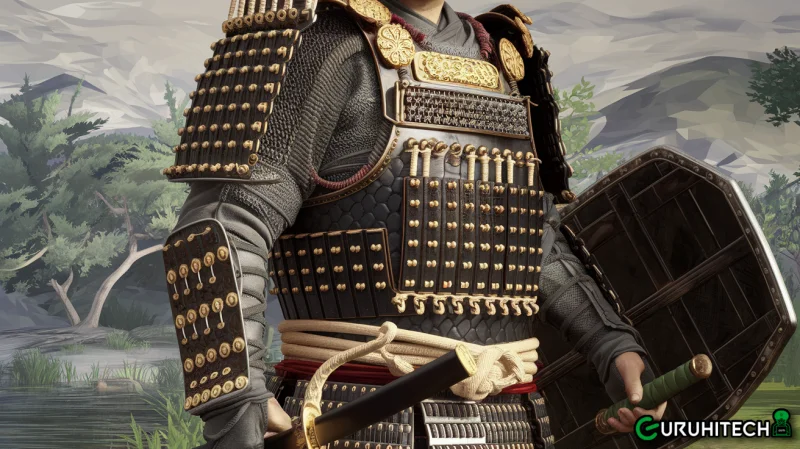Samurai Armor: The Iconic Battle Gear of Japan’s Fearless Warriors

Samurai armor, also known as yoroi, is one of the most iconic symbols of Japan’s feudal era. Worn by the samurai, Japan’s elite warriors, this armor was not only a testament to their prowess on the battlefield but also a reflection of their culture, values, and societal status. Over the centuries, samurai armor evolved to meet the changing demands of warfare, becoming a perfect blend of form and function. In this blog post, we will explore the fascinating history, design, and significance of samurai armor, delving into its intricate craftsmanship and the role it played in shaping Japan’s history.
1. The Origins of Samurai Armor
Samurai armor first emerged in the 4th and 5th centuries, during Japan’s Kofun period. At this time, warfare was relatively primitive, and early samurai armor, known as tanko (early breastplate), was simple, with basic protection made of iron plates sewn together with leather cords. These early warriors, however, laid the groundwork for the sophisticated armor that would develop in later centuries.
It wasn’t until the Heian period (794-1185) that samurai armor began to take on its more recognizable form. As the samurai class rose in power and Japan became increasingly militarized, armor makers refined their craft, creating protective gear that balanced mobility with protection. This era saw the rise of the iconic ō-yoroi, a boxy and bulky armor suited to mounted archers.
2. The Evolution of Samurai Armor
The evolution of samurai armor can be divided into three major periods: the Heian, Kamakura, and Sengoku eras. Each of these periods saw significant changes in armor design, reflecting the shifting nature of warfare.
- Heian Period (794-1185): During this time, the ō-yoroi was the dominant form of armor, designed primarily for horseback archery. It was heavy and elaborate, made from individual metal and leather plates bound together with silk cords.
- Kamakura Period (1185-1333): As samurai combat became more focused on close-quarters fighting, armor evolved to prioritize mobility. The dō-maru, a lighter and more flexible armor than the ō-yoroi, became popular. It allowed samurai greater agility during combat while still offering substantial protection.
- Sengoku Period (1467-1603): The warring states period marked an intense period of warfare in Japan, with large-scale battles requiring quicker and more adaptive armor. During this period, the tosei-gusoku, a more modern and streamlined armor, became widespread. It featured more plate armor and was designed to protect samurai from increasingly lethal firearms introduced by European traders.
3. The Components of Samurai Armor
Samurai armor wasn’t a single piece but rather a carefully assembled collection of different parts, each designed to protect a specific part of the warrior’s body. Here’s a breakdown of the main components of traditional samurai armor:
- Kabuto (Helmet): The kabuto is one of the most recognizable parts of samurai armor. Often elaborately decorated, the helmet protected the samurai’s head and face. Many helmets had crests called maedate, which displayed a warrior’s clan symbol or personal emblem. The mempo (face mask) was also sometimes attached, covering the face and adding a fearsome look to the warrior.
- Dō (Chest Armor): The dō was the main torso protector, usually crafted from iron or leather. It consisted of several small plates laced together, offering both flexibility and protection. Some armors were lacquered to resist moisture and rust, a necessity in Japan’s often humid environment.
- Kote (Armored Sleeves): The kote were armored sleeves that protected the samurai’s arms. These were often made of chainmail or small iron plates sewn onto fabric, offering protection without limiting movement.
- Haidate (Thigh Guards): The haidate were thigh protectors, typically worn over the samurai’s legs. These were made from small plates of iron or leather and helped guard against attacks from below, especially in hand-to-hand combat.
- Suneate (Shin Guards): The suneate were shin guards that protected the lower legs. Made from horizontal plates, they were essential for foot soldiers, ensuring mobility without sacrificing protection.
- Sode (Shoulder Guards): The sode were large, rectangular shoulder plates that shielded the upper body. These guards were especially useful in deflecting arrows and sword strikes from the side.

4. Aesthetic and Cultural Significance
Beyond its functional purpose, samurai armor also held deep cultural significance. Samurai armor was not just about protection but also about honor, status, and aesthetics. The design of the armor often reflected the wearer’s personality, clan affiliation, and social standing. Some samurai adorned their armor with elaborate designs, lacquered finishes, and family crests to project power and intimidate opponents.
Additionally, samurai armor was deeply tied to the Bushido code, the ethical code followed by the samurai. Bushido emphasized loyalty, honor, and courage in battle, and a samurai’s armor was a visible representation of his commitment to these values. The armor was often passed down from generation to generation, becoming a cherished family heirloom.
5. The Decline of Samurai Armor
The decline of samurai armor began with the introduction of firearms to Japan in the 16th century. As guns became more prevalent, traditional armor offered less effective protection. While tosei-gusoku was designed to resist bullets to some extent, it became clear that heavy armor was increasingly impractical in modern warfare.
By the time of the Edo period (1603-1868), Japan experienced a long era of peace under the Tokugawa shogunate, and the need for battlefield armor diminished. Samurai continued to wear armor for ceremonial purposes, but its role in warfare faded. The Meiji Restoration in the late 19th century marked the final nail in the coffin for the samurai class and their armor, as Japan embraced modernization and Western military technology.
6. Samurai Armor in Modern Culture
Despite its decline as practical battle gear, samurai armor remains a potent symbol of Japan’s rich cultural history. Today, samurai armor can be seen in museums, films, and even cosplay. Collectors and enthusiasts worldwide are fascinated by its intricate craftsmanship and historical significance.
Samurai armor has also left a lasting impact on modern fashion and design. Its influence can be seen in everything from military uniforms to modern body armor. Even in pop culture, samurai armor continues to inspire characters in movies, video games, and anime, serving as a reminder of the timeless appeal of the samurai warrior.
Conclusion
Samurai armor stands as a testament to Japan’s rich martial history and the enduring legacy of the samurai class. From the battlefield to modern-day museums, this iconic armor reflects both the practicality of warfare and the cultural values that defined an era. Whether viewed as a work of art, a historical artifact, or a symbol of honor, samurai armor continues to capture the imagination of people worldwide.
Ti potrebbe interessare:
Segui guruhitech su:
- Google News: bit.ly/gurugooglenews
- Telegram: t.me/guruhitech
- X (Twitter): x.com/guruhitech1
- Bluesky: bsky.app/profile/guruhitech.bsky.social
- GETTR: gettr.com/user/guruhitech
- Rumble: rumble.com/user/guruhitech
- VKontakte: vk.com/guruhitech
- MeWe: mewe.com/i/guruhitech
- Skype: live:.cid.d4cf3836b772da8a
- WhatsApp: bit.ly/whatsappguruhitech
Esprimi il tuo parere!
Ti è stato utile questo articolo? Lascia un commento nell’apposita sezione che trovi più in basso e se ti va, iscriviti alla newsletter.
Per qualsiasi domanda, informazione o assistenza nel mondo della tecnologia, puoi inviare una email all’indirizzo [email protected].
Scopri di più da GuruHiTech
Abbonati per ricevere gli ultimi articoli inviati alla tua e-mail.
